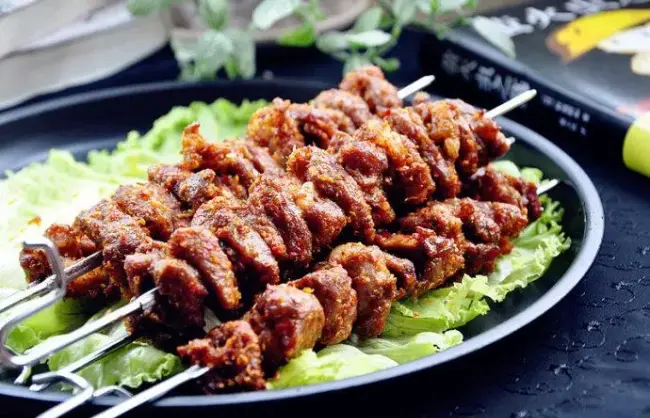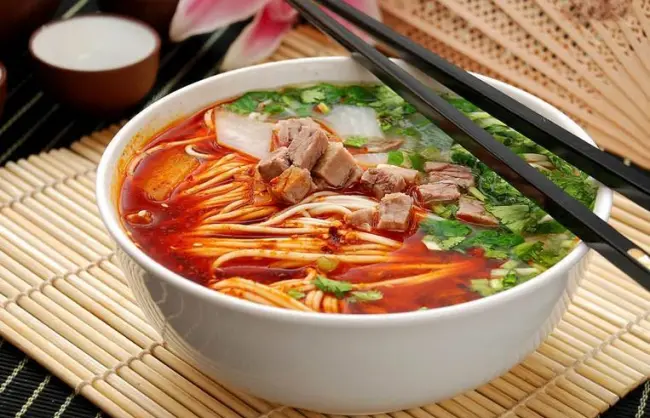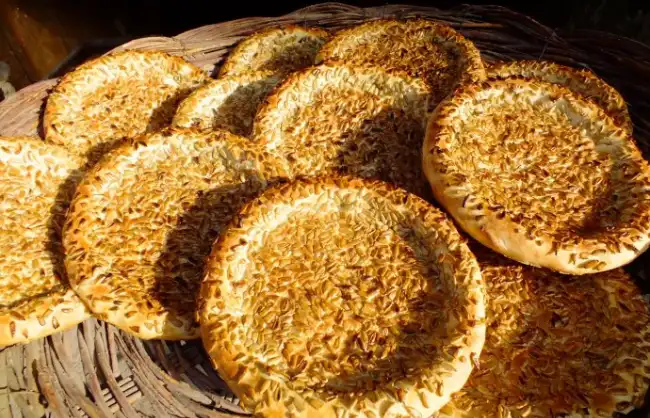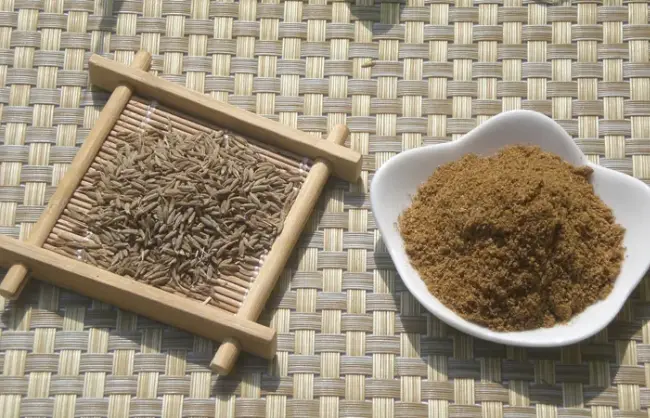The Silk Road used to be a vital trading route in ancient times, starting with Xi’an in China, and passing through Gansu and Xinjiang to Asia and Europe. Besides the exchange of goods, spices, herbs, cooking techniques, and foods were also traded on the Silk Road to enrich the food culture of China.
In this article, we will explore the top 10 China Silk Road foods that you must try. All of these, from diverse flour foods to juicy meat dishes, have strong regional characteristics and will undoubtedly take your taste buds on a memorable journey.
1. Xinjiang Lamb Skewers: A Fiery Delight on Summer Evenings
It is a kind of ethnic Silk Road food, originating in the Xinjiang region about 1,800 years ago. Tender pieces of lamb are marinated with onion to remove the special odor of mutton and grilled over a wood or charcoal fire. Flavored with cumin, chili, and a medley of spices, the meat tastes spiced and fragrant, scorched outside but red and juicy within.
Today, lamb skewers are not just a local specialty of Xinjiang, but one of the most beloved street foods that can be found at gourmet streets and night markets throughout the country. Especially on summer evenings, restaurants serving lamb skewers will be full of customers, chatting, drinking, and eating until midnight.

2. Xi’an Biangbiang Noodles: A Major Staple in Central Shaanxi
Biangbiang noodles is a traditional pasta popular in the central area of Shaanxi Province, especially in Xi’an. “Biang” is the most complicated character in Chinese, with 57 strokes, which imitates the sound of noodles smashing against the chopping board.
The wide, long, chewy noodles are crafted by skillful dough-kneading and repeated noodle-smashing. This famous Silk Road food is served with boiled vegetables, chopped spring onions, and garlics, as well as seasonings such as salt, vinegar, soy sauce, and chili flakes. Lastly and most importantly, a spoonful of hot oil will be drizzled on the top to fully bring out the flavor of the spices.
Read more on Doing A Silk Road Tour? Check out These Tasty Foods Made of Flour
3. Da Pan Ji (Big Plate Chicken): A Hearty Delight from Xinjiang
Da Pan Ji, also known as Big Plate Chicken, is a flavorful Asian cuisine along the Silk Road, originating from food stalls in Xinjiang. Today, it has become one of the most popular dishes in Northwest China, which could go well with various staple foods, such as steamed rice, hand-pulled noodles, naan bread, and deep-fried dough sticks.
Spicy and hot, this Silk Road food offers a special taste mixed with the tenderness of chicken and the glutinousness of potatoes. To make the dish, one should stir-fir chicken pieces first, and then stew them together with chunks of potatoes and green and red peppers. Special attention needs to be paid to the stewing temperature and time in order to let the meat and vegetables fully absorb the aromatic sauce.
4. Lanzhou Beef Noodles: The Most Common Staple of the City
Beef noodles is the most characteristic food in Lanzhou, with a history of over 200 years. This famous Silk Road food not only treats diners with mellow and savory flavor, but also looks good in color, featuring clear broth, white radish slices, red chili oil, green garlic sprouts, and cilantro, as well as yellowish noodles. Besides, the making of the noodles is really a skilled job. Experienced chefs can make Lanzhou Noodles as thin as a hairline.

5. Xi’an Roujiamo: The Chinese Hamburger
Roujiamo, often referred to as the Chinese Hamburger, is a popular street food originating from Xi’an City. The soul of this Silk Road food lies in the distinctive Lazhi meat, which is cooked by a long-time braising in the special-made soup stock to make the fat not greasy, the lean more tender. The fluffy, steamed bun is baked to have a crispy crust. Every bite of Roujiamo provides a delightful fusion of flavors.
6. Xi’an Yangrou Paomo: A Soup Dish with 3,000 years of History
Yangrou Paomo, also known as Crumbled Flatbread in Mutton Stew, is a traditional dish in Xi’an, first served at vital banquets as early as the Western Zhou Dynasty (1046-771BC). During Tang Dynasty (618-907), people began to stew flatbread together with the meat to gain a richer taste.
This time-honored Chinese food along the Silk Road is very popular both among local people and tourists. What makes it unique is the special way of eating. Diners are able to participate in the making process by breaking the flatbread into small dices with their fingers before cooking. Diced flatbread can fully soak in the flavor of the broth. Tender chunks of lamb, along with various herbs and spices, are added to create a hearty and aromatic soup.
7. Xinjiang Lamb Pilaf: A Preferred Silk Road Cuisine in the Past
Xinjiang Lamb Pilaf, also known as “polo”, is a beloved, home-made meal in Xinjiang. The history of this food can be traced back to hundreds of years ago. Easy to carry and eat, Lamb Pilaf was always the first choice Xinjiang cuisine for local merchants going along the ancient Silk Road.
This traditional Silk Road food is a fragrant rice dish cooked with lamb, onions, carrots and a blend of aromatic spices. The slow cooking process allows the flavors to meld together, resulting in a delicious and satisfying one-pot meal featuring tender meat, glutinous rice, and aromatic spices.
Read more on The Silk Road Stories
8. Xinjiang Naan Bread: A Traditional Uyghur Cuisine on the Silk Road
Naan Bread, usually with a round shape and golden-brown crust, is a kind of baked flatbread that has been enjoyed for centuries in Xinjiang, for it can be easily kept for a long time in the harsh climate around the region and convenient to carry around. This makes Naan an ideal food for long-distance travel in desert areas. While baking, Xinjiang people usually add salt water, minced onion, sugar, eggs, milk, and sesame to enrich the flavor according to their tastes.
Naan Bread is also a representative Silk Road food of the Uyghur minority and plays an essential role in local ethnic culture. In different seasons or when there is an important festival, a special Naan Bread with patterns of particular meanings on the top will be made.

9. Hand-Grasped Mutton: Savor the Original Flavor of Lamb
Hand-grasped mutton is a traditional way of eating boiled mutton with bones, especially among ethnic minorities in Xinjiang, Gansu and Ningxia. This old Silk Road food is very easy to make. Just chop the mutton into pieces and boil them in water until the meat and bones can be easily separated. After put out, the mutton is served with dipping sauce mixed with minced onion, salt, cumin, and chili powder to add more flavor.
10. Gansu Niangpi: A Refreshing Delicacy in Summer Days
Niangpi, also known as “Gansu Noodles”, is a traditional snack originating in Qinghai, and has become popular in Northwest China today. Made from wheat flour, Niangpi has a chewy texture and is topped with a refreshing sauce mixed with vinegar, chili oil, mustard, and mashed garlic… to gain a hot and sour flavor. Besides, this Silk Road food is served cold, making it a perfect dining choice in hot summer days.

FAQs about Silk Road Food
1. Are Silk Road foods suitable for vegetarians?
The Silk Road traverses many regions that are inhabited by minority people who eat meat as their main food. However, there are still a lot of Silk Road foods that can be enjoyed by vegetarian options, such as vegetable skewers, stir-fried vegetables, and various noodle dishes.
2. Are Foods along the Silk Road very spicy?
The tastes of Silk Road foods vary according to the region. In general, foods along the Silk Road offer mild flavors. Some of the Shaanxi cuisines present a hot and sour taste, but the spiciness can be accepted by a lot of tourists. If you have a low tolerance for heat, it’s always a good idea to ask about the spiciness before ordering.
3. Where can I try Silk Road foods in China?
Popular tourist destinations along the Silk Road, such as Xinjiang, Xi’an, Dunhuang, and Lanzhou, boast different specialties that could let you experience diverse culinary delights during your China Silk Road tours. Local restaurants, street food stalls, and night markets are great places to set out food explorations.
Related Reading:
- 8 Fascinating Silk Road Facts You Didn’t Know
- The History of Silk Road in China
- How to Plan a Silk Road Tour









